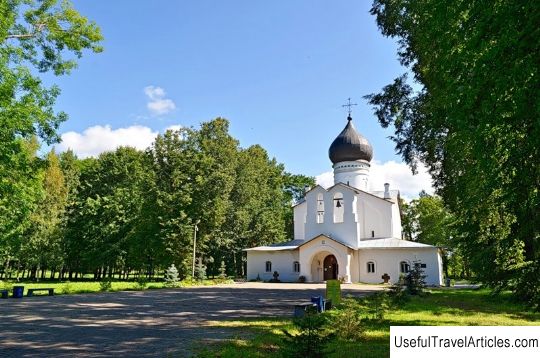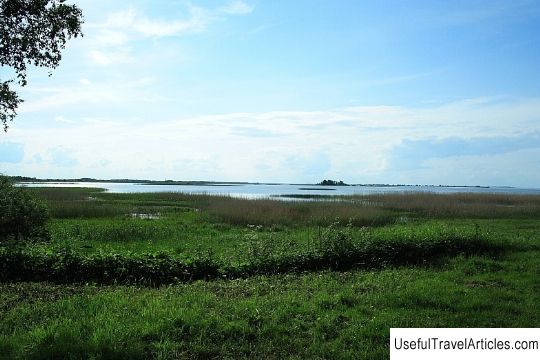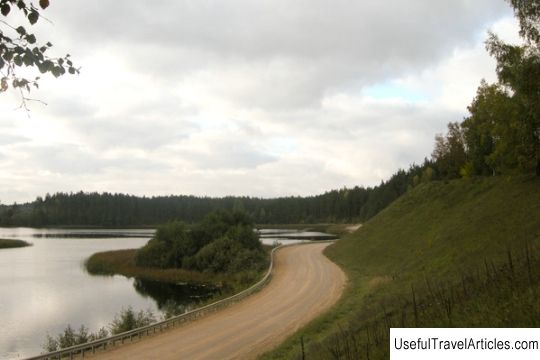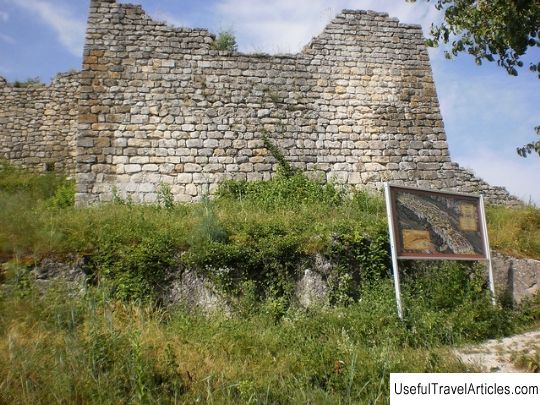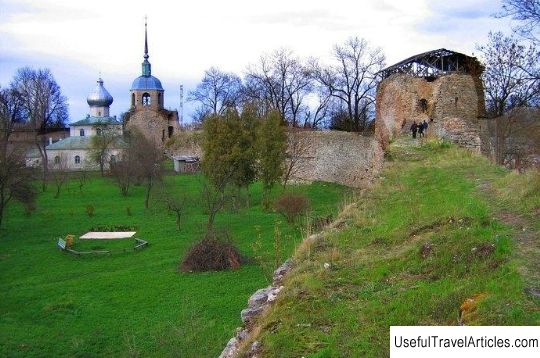Gdovskaya fortress description and photo - Russia - North-West: Pskov region
Rating: 8,6/10 (1544 votes) 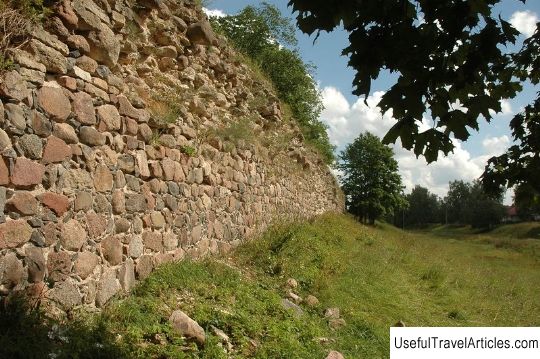
Gdovskaya fortress description and photos - Russia - North-West: Pskov region. Detailed information about the attraction. Description, photos and a map showing the nearest significant objects. Photo and descriptionThe famous city of Gdov emerged as an outpost of the ancient city of Pskov. In the old days, the walls of the Gdov fortress were protected from the attacks of foreigners. The first mention of the city of Gdov dates back to 1323. The local settlement developed despite the constant German raids and wars, which was facilitated by its key border position right on the shore of Lake Peipsi, which divided Livonia and Russia. In addition, Gdov covered the northern approaches located on an important land road leading to Pskov. With the passage of time, the city on the river became a large settlement, as well as a powerful fortress in the western lands of Russia. The defensive and military importance of the city of Gdova significantly strengthened its position in the 15th century, when firearms acquired the greatest importance. The construction of the city walls of Gdov became a far-sighted action of the political government of the Pskov Republic, which appeared as a result of significant military operations, when it was necessary to reliably protect the most important settlement of the Pskov land. The construction of the fortress was carried out in an emergency. During the construction season, a stronghold appeared on the site of a previously existing small town, which closed an area of about 4 hectares with its walls. The artel of Pskov masons, engaged in the construction of the fortress, began to be considered one of the most qualified in all of Russia. The half-wooden-half-stone fortification was erected with an unprecedented speed and was considered as insufficiently defensive and unfinished, which is why in 1434 the Pskov inhabitants, as mentioned in the chronicle, replaced the wooden half of the wall with a stone one. On both sides the Gdov fortification was washed by the Gdovka river, on the other side - a small stream called Staritsa, and in front of the southeastern side an opening was built, reaching 14 m in width and at least 3.5 m in depth. The thickness of the walls of the Gdov fortress reached 4 m, and they were composed of alternating rows of boulders, as well as Devonian limestone. In some places, they reached the level of the fighting course, and together with the battlements that had not reached us, they reached a height of 7.5-8 m. It is worth mentioning that earthen hills were located on the site of the towers of the Gdov fortress. There is a version that they arose by order of Peter the Great, who visited Gdov in 1706; he ordered to sprinkle the walls with earth for the best reinforcement. Most likely, the earthen hills were settled back in the 19th century during the process of breaking up in the fortress park courtyard. The hills mothballed the most important structures of the Gdov fortress. It is assumed that the combat function of the tower was supplemented by a sentinel and a sentry, as it was located near the main Pskov gate. The outer part of the wall was destroyed by an explosion that appeared from somewhere under the ground. Signs of this explosion were deep cracks in the masonry itself, as well as gunpowder soot on the stones and carbonaceous layers from burnt-out wooden structures. Among the ruins of the tower, nine fragments from cannonballs and iron grenades were found, as well as one stone cannonball with a diameter of 9 cm and a weight of 7.5 kg. It was all this that became the historical trace of the numerous sieges that the city of Gdov was subjected to in the 17th century. By the middle of the 15th century, a new improvement and strengthening of the Gdov fortress was carried out. Next to her, and also near the Kushelsky and Pskov gates, additional barriers were lined up in a row - barriers, which reached 22 and 30 meters in length and impeded a direct passage to the gate. Before entering the fortress, it was necessary to make round turns and go through a couple of gates, as well as a longitudinal corridor passage that was shot from above. Towards the end of the 17th century, the military mission of Gdov began to decline sharply and inevitably. The number of fortifications fell from 26 in 1686 to 11 in 1698. In the first half of the 18th century, the Gdov Fortress completely lost its former military orientation. Gradually, the walls began to be dismantled for the needs of construction, and in February 1944, Gdov was almost destroyed by German troops. At present, little is left of the Gdov fortress: only 3 walls have survived (South-Eastern, South-West and North-East) and earthen hills in the place of destroyed towers and gates up to 6 meters high. In addition, a cathedral in honor of the icon of the Sovereign Mother of God, destroyed during the Great Patriotic War, was restored on the territory of the fortress.       We also recommend reading Church of St. Seraphim of Sarov description and photo - Russia - Baltic: Svetlogorsk Topic: Gdovskaya fortress description and photo - Russia - North-West: Pskov region. |
